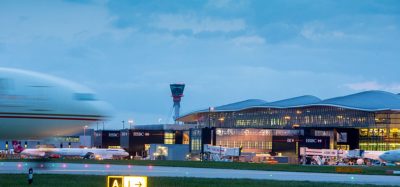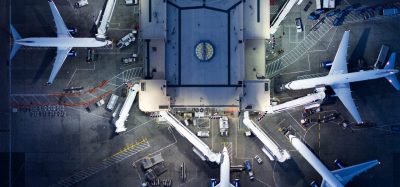Five tech-smart tips to cut airport border queues
Posted: 19 August 2021 | Lars Toerholm at Veovo | No comments yet
What can organisations do to avoid excessive wait times? Can technology really help?


Holiday-starved tourists have descended on airports this summer, with travel companies reporting a surge in bookings as relaxed rules come into effect.
Most EU governments have tentatively opened their borders to vaccinated UK and European residents. Meanwhile, England has just lifted the requirement to self-isolate for US and EU visitors arriving with the proper tests and paperwork. Canada is also now allowing vaccinated Americans entry, with travellers from the rest of the world welcome from September.
These route re-openings are great news; our industry deserves a much-needed boost.
But are operators and their critical service partners ready for the departure and arrival of thousands of visitors as more international travel resumes? We only have to look at the news to know it’s not just the sheer number of passengers causing concerns and increasing wait times, particularly at immigration.
Important additional COVID-related checks – including locator forms, vaccination checks, and test results – have impacted processing times at borders. Early this summer, this additional paperwork pushed average UK immigration checking times from a handful of minutes to over 12 at peak times. And this is when airports were only operating at 20 per cent of their pre-pandemic potential.
Authorities continue to work hard to minimise queues, including updating automated electric gates to check vaccination status. British Airways, Virgin Atlantic and Heathrow are trialling the identification process and are already looking at ways to expand options for showing vaccine status across physical, digital and integrated formats, including the IATA Travel Pass. However, the technology is not yet available everywhere, nor can it cater for all arrivals. Particularly as new routes open up.
So, is it just a matter of lumping it or leaving it? Do passengers simply have to accept that longer wait times are part and parcel of travel for the near future? Or is there another way?
While many things are out of the control of airports and immigration authorities – such as changing travel corridors, document check requirements and inclement weather – there are some effective ways to quickly tackle the problem of queues before they start snaking off into the beyond. The most immediate option with long-term benefits is data-driven staff planning – knowing where and when to deploy resources before things reach crisis point.
At the moment, however, it isn’t easy to predict how many people are likely to show up in each area and when. If border control knew who was coming (in other words, the number of people from any given country at any one time), they’d understand what processing was required and how long to allocate for each type.
Intelligent forecasting and planning automation technology are proving essential to more informed and proactive decision-making. By capturing the right data and then using machine learning to model passenger show-up patterns and processing times against variables such as arrival gate, flight (origin) and time of day, it becomes much easier to efficiently match resources to demand.
So, what can organisations do to avoid excessive wait times? Can technology really help?
The answer is yes, and more quickly than you might think. Here are the top five recommendations on how to go about it:
1. Reduce planning windows to get ahead of change.
This is not the time to be creating seasonal-based plans and expecting them to be relevant. Things are way too volatile. Instead, make them four to six weeks out to coincide with shift planning, and refine as you get closer to the day of operations.
2. Identify what passenger arrival data is needed to forecast.
Predict passenger show-ups per flight – this makes it much easier to adjust plans to handle schedule changes or updates to travel rules such as the UK’s ‘traffic light system’.
Airports and border authorities will already have access to a wealth of data that can be extracted to build these show-up predictions. For example, the number of passengers per aeroplane, passport-type, how long it takes to walk from the gate to immigration, flight origin (i.e. a red, amber or green-listed country) and scheduled arrival time. Historic on-time arrival performance can also be helpful in refining likely show-up times at immigration. These appearance predictions can then be aggregated to provide a robust arrival profile curve at immigration.
3. Create scenario-based plans on what might happen.
For instance, if a country changes from red to amber listed, how will that affect flight processing from that country? What staff is needed, where and by when?
4. Dynamically adjust the forecast using live data.
Now compare the forecast with what’s actually happening with each flight. Is there updated booking data or a Passenger Transfer Manifest (PTM) from the airline? Is each flight on time? Is there a gate change that could impact passengers’ immigration arrival times? Tools like OAG’s FlightTracker and the airport’s AODB have a wealth of relevant live information that can help refine the forecast. What about the situation in immigration itself? Is the show-up profile as expected; are lane openings going according to plan? Sensor data from immigration queues provides accurate insight into live wait and processing times, which can feed a revised forecast for the hours ahead.
Yes, machine learning models need training, which can take time. However, live data simplifies the comparison of actual to forecasted show ups. It also, importantly, shows why it was different, such as longer processing times than predicted or late arrivals. This allows actions to be taken and the model refined for increased accuracy – and so leads to a continuous cycle of improvement.
5. Refine the plan in the hours ahead to match demand.
A capacity planning tool fed with a live re-forecast will recommend the best options for the current situation, given the constraints you have, such as staff numbers and the number of possible lanes. This could include shifting staff between zones or terminals before queues build, changing breaks or adjusting lane openings. It doesn’t seem like a lot, but even small changes to shifts and staff allocations can make a significant impact on processing speed and efficiency.
No one’s in any doubt – passenger processing points, like immigration, will continue to be painful while paperwork checks remain manual, staffing shortages persist and travel rules changes.
But intelligent automation that uses live data, passenger forecasting and capacity planning tools can make a big difference, and in a matter of weeks.
Predicting when passengers will arrive – and their processing needs dependent on origin and passport – will enable airport and their border control partners to be much more agile to travel rule changes. The time to act is now.
Related topics
Information technology (IT), Passenger experience and seamless travel, Terminal operations


















